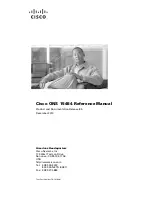
14
Operating Manual for Series NRX
Trip Units - Digitrip™ 520/520M
EATON
www.eaton.com
Instruction Leaflet
IL01301051E
effective September 2013
ZNne selecoive inoerlNcking (NpoiNnal)
Noee:
N
The zone selective interlocking function is a circuit breaker option when
ordering the Series NRX. Circuit breakers from the factory that are ordered
with the zone interlocking function included will have three wires (Zout, Zcom,
Zin) connected to secondary contacts (27, 28, 29). These contacts can then
be wired for zone interlock to other circuit breakers in the various zones. Zone
selective interlocking requires no additional modules or auxiliary power supplies
to function.
Zone selective interlocking is available on the SHORT delay and
GROUND fault protection functions. The zone interlocking, if supplied,
is wired via a single set of three wires labeled Zone In (Zin) and
Zone Out (Zout) along with a zone common wire. The zone selective
interlocking function has combined the logic interlocking of SHORT
delay and GROUND fault. A zone out signal is sent whenever the
ground fault pickup is exceeded or when the short delay value of 2
x (I
R
)is exceeded. Zone selective interlocking provides the fastest
possible tripping for faults within the zone of protection by coordinating
among all applicable circuit breakers in the system (mains, ties,
feeders, and downstream circuit breakers) to limit a power outage
to only the affected parts of the system. When zone interlocking is
employed, a fault within the zone of protection of the breaker will:
• Trip the affected circuit breaker immediately, and at the same time
• Send a signal to upstream Digitrip units to restrain from tripping
immediately. The restraining signal causes the upstream circuit
breakers to follow their set coordination times, so that the service
is only minimally disrupted while the fault is cleared in the shortest
time possible
For an example of how zone selective interlocking may be used, see
Appendix A
of this instructional leaflet.
DiagnNsoics indicaoNr—circuio breaker/orip unio
The Digitrip unit has LEDs for diagnostic reasons. The Status LED is
bicolor. A normal powered unit will flash the green status at a 1-second
repetition rate.
If a problem is encountered in any of the following scenarios:
• NVRAM memory problem
• MCR auxiliary switch or circuit breaker mechanism is in an improper
state
• Trip actuator (TA) coil circuit is open
The Status LED will light or flash red. This is an indication to
troubleshoot the trip actuator, circuit breaker mechanism/MCR switch
or trip unit’s NVRAM memory as soon as possible (see Troubleshooting
Guide).
In addition, the Digitrip 520M style units (not Maintenance Mode
style), provide a relay contact alarm (12 to 11) and can provide these
alarm diagnostics externally.
GrNund Faulo PrNoecoiNn
General
When the Digitrip includes ground fault protection features, the
distribution system characteristics (such as system grounding, number
of sources, and number and location of ground points) must be
considered along with the manner and location in which the circuit
breaker is applied to the system.
The Digitrip 520 uses three modes of sensing to detect ground fault
currents: residual, source ground, and zero sequence (
Table 5
).
Series NRX circuit breakers can accom modate all three types,
including four-pole circuit breakers. The circuit breaker secondary
contact inputs are used to configure the three schemes. No jumper
from 19 to 20 programs the unit for a residual ground fault scheme,
while a jumper from 19 to 20 programs the trip unit for either a source
ground or zero sequence configuration. If present, this jumper resides
on the stationary side of the switchgear assembly for drawout circuit
breakers. In all three schemes, the proper current sensor is required
per
Table 5
.
Residual sensing
Residual sensing is the standard mode of ground fault sensing in
Series NRX circuit breakers. This mode uses one current sensor on
each phase conductor (
Figure 18
) and one on the neutral for a four-
wire system (
Figure 18
). If the system neutral is grounded, but no
phase to neutral loads are used, the Digitrip 520 includes all of the
components necessary for ground fault protection. This mode of
sensing vectorially sums the outputs of the three or four individual
current sensors. For separately mounted neutrals, as long as the
vectorial sum is zero, then no ground fault exists. Residual ground
fault sensing features are adaptable to main and feeder circuit breaker
applications. Available ground fault pickup settings employing residual
sensing are given in
Tables 7 and 8
.
•
CAUTION
ALWAYS OBSERVE THE POLARITY MARKINGS ON THE INSTALLATION
DRAWINGS. IF THE NEUTRAL SENSOR CONNECTIONS ARE INCORRECT, A
NUISANCE TRIP MAY OCCUR.
To ensure correct gound fault equipment performance, conduct field
tests to comply with requirements (North America: NEC Article 230-95
C).
Source ground sensing
Depending upon the installation requirements, alternate ground fault
sensing schemes may be dictated. The ground return method is usually
applied when ground fault protection is desired only on the main
circuit breaker in a simple radial system. This method is also applicable
to double-ended systems where a mid-point grounding electrode is
employed. For this mode of sensing, a single current sensor mounted
on the equipment-bonding jumper directly measures the total ground
current flowing in the grounding electrode conductor. The settings
shown in
Table 6
will apply when using the source ground sensor
displayed in
Figure 18
and asserting the source ground jumper.
Noee:
N
When using a Communication Module (see “Communication Module”
section), the enabling of source ground mode is done via the position of the
jumper located on this module.
Zero sequence sensing
Zero sequence sensing, also referred to as vectorial summation, is
applicable to mains, feeders, and special schemes involving zone
protection. The maximum outside diameter is 8.20 in (208,3 mm).
The inside minimum diameter is 5.80 in (147,3 mm). The maximum
thickness is 1.70 in (43,2 mm). The settings displayed in
Table 5
will
apply.















































